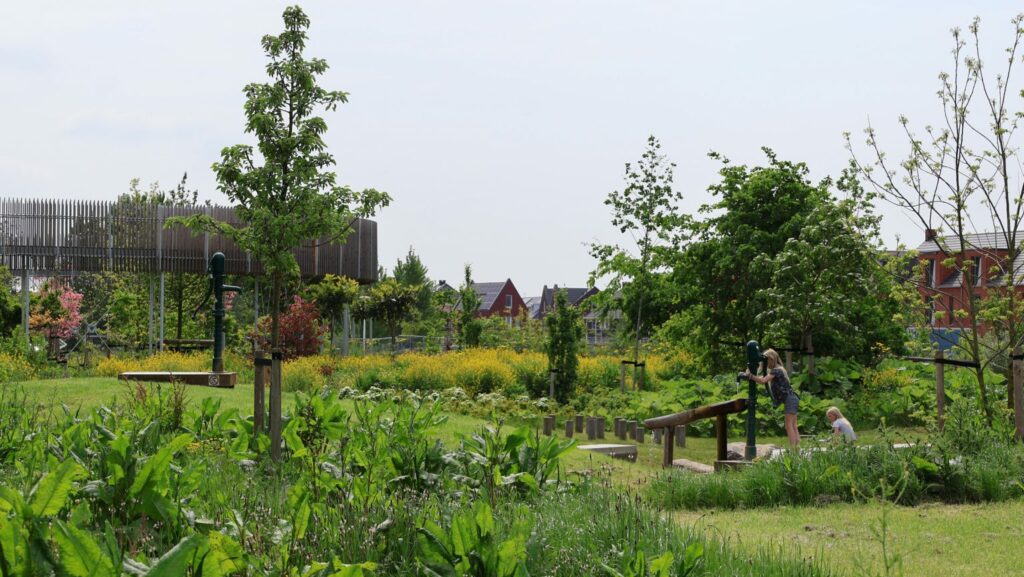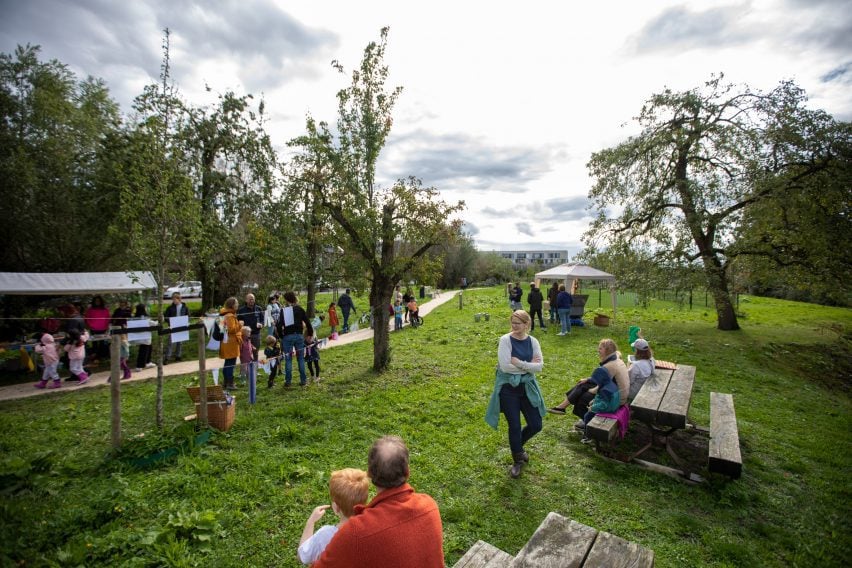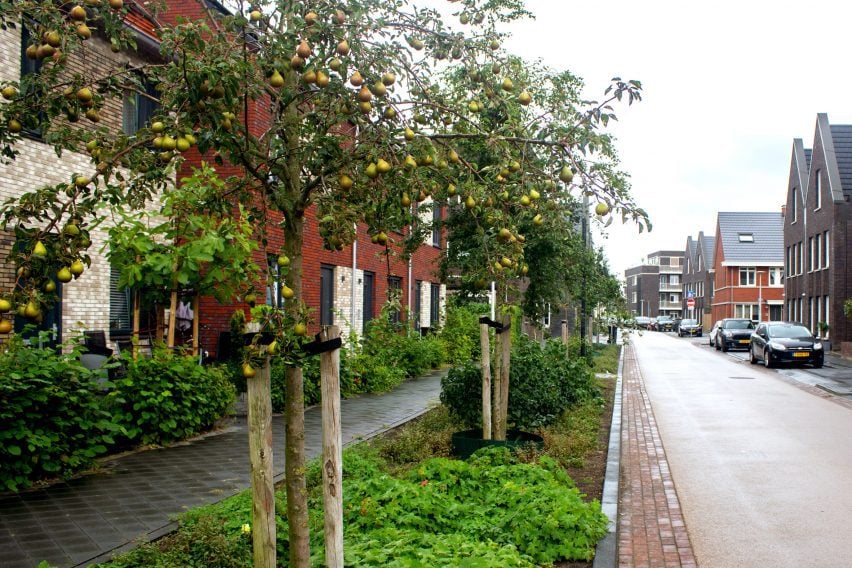The Rijnvliet housing development in the Netherlands has around 1,000 fruit trees and 220 species of edible flora. The development has 1,000 homes surrounded by parks, rivers and forestry with the aim of including as much food producing plants as possible.
 “The idea of an edible neighborhood originated from the residents themselves”, says the landscape architect. “It began as a grassroots proposal to integrate edible green spaces into their living environment”. They aimed to place planting wherever possible, along the park lands and riverside landscapes, and along all of the roads.
“The idea of an edible neighborhood originated from the residents themselves”, says the landscape architect. “It began as a grassroots proposal to integrate edible green spaces into their living environment”. They aimed to place planting wherever possible, along the park lands and riverside landscapes, and along all of the roads.
 The landscape was designed to mimic a natural habitat with seven layers of planting – a canopy of original and planted large trees, smaller trees, shrubs, a herb layer, soil covers, an underground layer of plants that produce roots and vertical climbing plants. The structure of the food forest mirrors a natural forest ecosystem, creating a rich diversity of vegetation that attracts insects, pollinators, and other organisms.
The landscape was designed to mimic a natural habitat with seven layers of planting – a canopy of original and planted large trees, smaller trees, shrubs, a herb layer, soil covers, an underground layer of plants that produce roots and vertical climbing plants. The structure of the food forest mirrors a natural forest ecosystem, creating a rich diversity of vegetation that attracts insects, pollinators, and other organisms.
 With support from the municipality, they established a dedicated maintenance team trained specifically for this landscape. Regenerative techniques such as green manure crops were used to restore soil health and create conditions suitable for edible planting.
With support from the municipality, they established a dedicated maintenance team trained specifically for this landscape. Regenerative techniques such as green manure crops were used to restore soil health and create conditions suitable for edible planting.
 Throughout the development permeable paving, gravel, and green spaces facilitate effective water management. While benches and pedestrian bridges were constructed using locally sourced wood.
Throughout the development permeable paving, gravel, and green spaces facilitate effective water management. While benches and pedestrian bridges were constructed using locally sourced wood.
You can read the original article at www.dezeen.com
